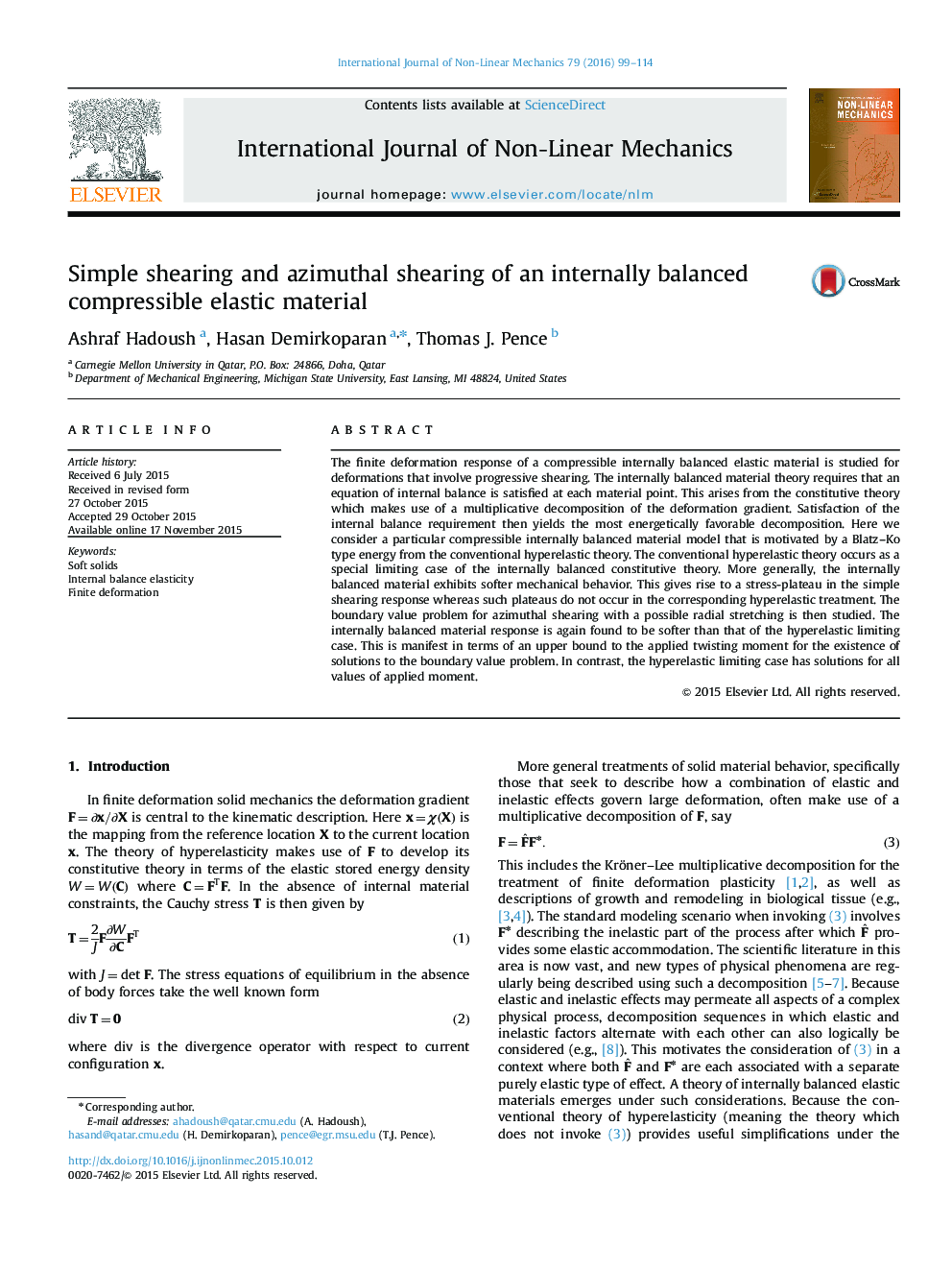| Article ID | Journal | Published Year | Pages | File Type |
|---|---|---|---|---|
| 784818 | International Journal of Non-Linear Mechanics | 2016 | 16 Pages |
•Minimization with respect to a multiplicative decomposition of the deformation gradient.•Conventional hyperelasticity retrieved as a limiting case.•Well-posed boundary value problems.
The finite deformation response of a compressible internally balanced elastic material is studied for deformations that involve progressive shearing. The internally balanced material theory requires that an equation of internal balance is satisfied at each material point. This arises from the constitutive theory which makes use of a multiplicative decomposition of the deformation gradient. Satisfaction of the internal balance requirement then yields the most energetically favorable decomposition. Here we consider a particular compressible internally balanced material model that is motivated by a Blatz–Ko type energy from the conventional hyperelastic theory. The conventional hyperelastic theory occurs as a special limiting case of the internally balanced constitutive theory. More generally, the internally balanced material exhibits softer mechanical behavior. This gives rise to a stress-plateau in the simple shearing response whereas such plateaus do not occur in the corresponding hyperelastic treatment. The boundary value problem for azimuthal shearing with a possible radial stretching is then studied. The internally balanced material response is again found to be softer than that of the hyperelastic limiting case. This is manifest in terms of an upper bound to the applied twisting moment for the existence of solutions to the boundary value problem. In contrast, the hyperelastic limiting case has solutions for all values of applied moment.
